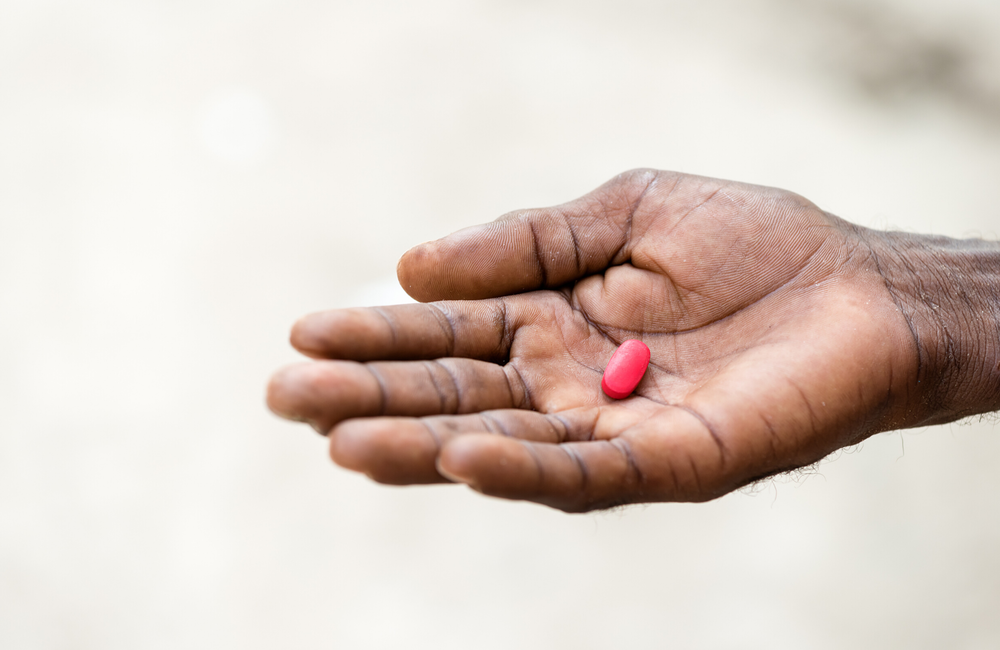
Providing free HIV treatment and care to migrants in Botswana would avert 16,000 new HIV infections and 500 HIV-related deaths by 2030, according to a modelling study published in PLOS ONE. Currently Botswana only provides free antiretrovirals to its citizens, excluding from eligibility migrants who make up 7% of the population, many coming from countries with a very high HIV prevalence.
Expanding antiretroviral eligibility to cover migrants was shown to be cost effective. However, this alone would not be enough for Botswana to reach the 2030 target of a 90% reduction in HIV incidence (compared to 2010 levels). The authors therefore stress the importance of enhancing efforts to address the underlying behavioural factors driving HIV transmissions and the expansion of prevention initiatives.
“While inclusion of migrants will accelerate the rate of reduction of new HIV infections by 2030, this will not be sufficient to reach the 95-95-95 incident reduction target,” they write. “More efficiencies and higher coverage levels are needed, utilizing current prevention modalities (e.g. condom use, voluntary medical male circumcision, treatment as prevention, and PrEP) and ensuring equitable access to treatment in all populations groups in order to meet the 2030 target for HIV incidence reduction.”
Increasing the proportion of people living with HIV who are diagnosed, treated and virally suppressed are key to the control of the global HIV pandemic. UNAIDS has set a 90% target for each of these outcomes by 2020 (90-90-90) and 95% by 2030 (95-95-95). Theoretically, achievement of both goals could result in a 90% reduction in HIV transmissions and 90% fall in HIV-related mortality, compared to 2010 levels.
Botswana is an upper-middle income country, with a strong economy attracting migrants from other countries in the region. Documented migrants make up 7% of the population. The country has a well-funded national HIV programme, but only citizens are eligible for free treatment and care. Data from 2018 showed 86% of its citizens with HIV had been diagnosed, that 95% of diagnosed individuals were on antiretroviral therapy (ART) and that 95% of people taking antiretrovirals had an undetectable viral load.
A team of investigators led by Dr Tafireyi Marukutita of Monash University, Melbourne, noted that HIV incidence in Botswana fell only minimally between 2010 and 2018. They hypothesised that excluding migrants from ART eligibility was slowing reductions in HIV incidence in Botswana. To test this theory they modelled the trajectory of the HIV epidemic in the country between 2010 and 2030 according to three scenarios:
- Current levels of linkage to care, treatment and viral suppression (baseline model).
- Scaled-up efforts to meet 90-90-90 and 95-95-95 targets, but with eligibility for treatment and care restricted to citizens.
- Scaled up efforts to meet UNAIDS 2020 and 2030 targets, with both citizens and migrants eligible for free antiretrovirals and HIV care.
"Documented migrants make up 7% of the population, but only citizens are eligible for free treatment and care."
The investigators used the Optima HIV model. This is a well-established tool for estimating changes in the dynamics of HIV incidence and mortality. It takes into account the demographic, epidemiological and factors that are known to drive the HIV pandemic.
In the baseline model, 172,000 new HIV infections were projected between 2020 and 2030. Scaling up programmes to meet 90-90-90 and 95-95-95 targets but with eligibility restricted to citizens would prevent 48,000 of these new infections (total number of new infections = 124,000). Scaled up efforts with access expanded to include migrants would prevent an additional 16,000 new HIV cases (total number of new infections = 108,000).
Compared with 2020 levels, new HIV infections in the total Botswana population in 2030 were projected to be 31% higher in the baseline model, but 23% lower when scale-up was restricted to citizens and 42% lower when scale-up encompassed both citizens and migrants.
Achievement of 95-95-95 targets by 2030 for both citizens and migrants was projected to result in a 44% reduction in HIV incidence compared to 2010 – well short of the 90% UNAIDS target needed to end the pandemic.
“Even if 95-95-95 was achieved in citizens and migrants, reductions in new infections would still fall well short of the 90% target,” comment the authors. “Without a significant increase in the coverage of additional prevention measures, scaling up testing and treatment alone to 95-95-95 in all population groups will not meet HIV incidence reduction targets.”
In terms of mortality, the baseline model projected 8400 HIV-related deaths between 2020 and 2030. This was reduced to 6700 when scale-up was restricted to citizens and 6200 when enhanced efforts encompassed both citizens and migrants.
Compared to 2020 levels, HIV-related mortality in the total Botswana population in 2030 was projected to be 15% higher in the baseline scenario, but 28% lower (no change for migrants, 31% reduction for citizens) when scale-up was for citizens and 39% lower (58% lower in migrants, 37% lower in citizens) when both populations were eligible for scale-up.
Treating migrants was estimated to cost USD$74 million over the decade, but would be cost effective in the long run.
Marukutira T et al. Modelling the impact of migrants on the success of the HIV care and treatment program in Botswana. PLOS ONE, 15: e0226422, 2020 (open access).
